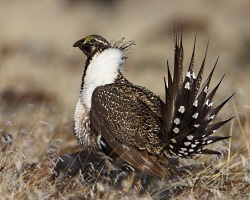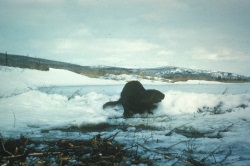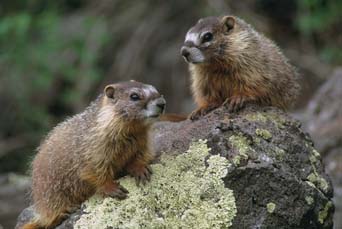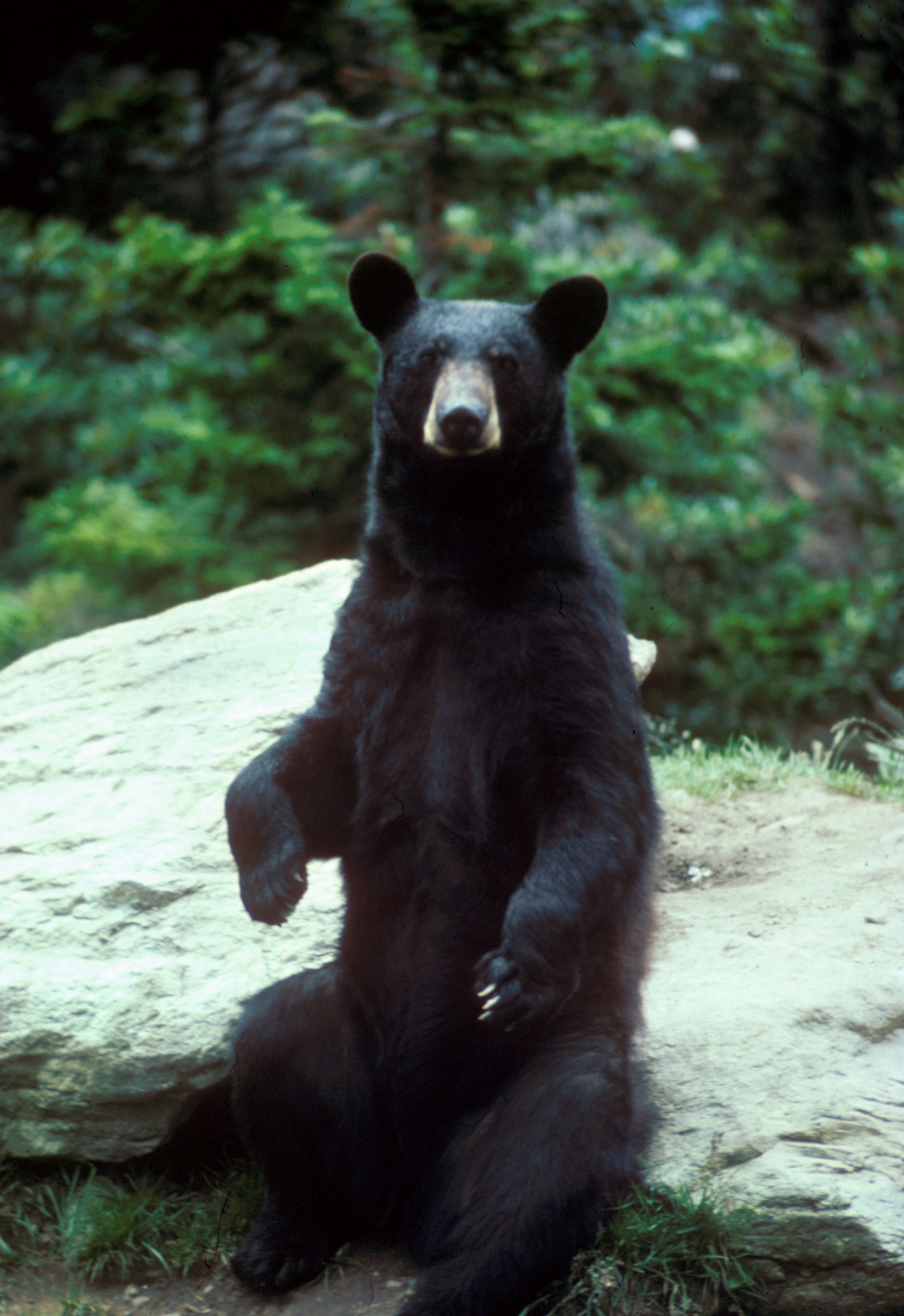
Photo Courtesy US FWS
Mike Bender, Photographer
Hi, this is Mark Larese-Casanova from the Utah Master Naturalist Program at Utah State University Extension.
I have to admit that it didn’t make much sense to me that yesterday was the start of summer. While sitting in the warm sun, feeling like winter forgot to give spring a turn in the seasonal cycle, I though of the American black bear, another mammal that also probably wondered when the warm weather would finally arrive.
Black bears are native to most of North America, even into northern Mexico. In Utah, black bears are common throughout many of the state’s forests. Contrary to its name, black bears tend to be medium to dark brown in the western US, although its color can range all the way from blonde or cinnamon to black.
As black bears emerge from their winter slumber, they are particularly hungry from several months of living mostly off of fat reserves. This is an even greater challenge for females because cubs are born in January or February and survive on the mother’s milk until spring. So, when spring arrives, they are more than happy to feed on a wide variety of foods, including fruits, nuts, grubs and other insects, small vertebrates, and carrion. Bears are most actively feeding around dawn or dusk, but may feed at other times of day if they become habituated to human food sources.
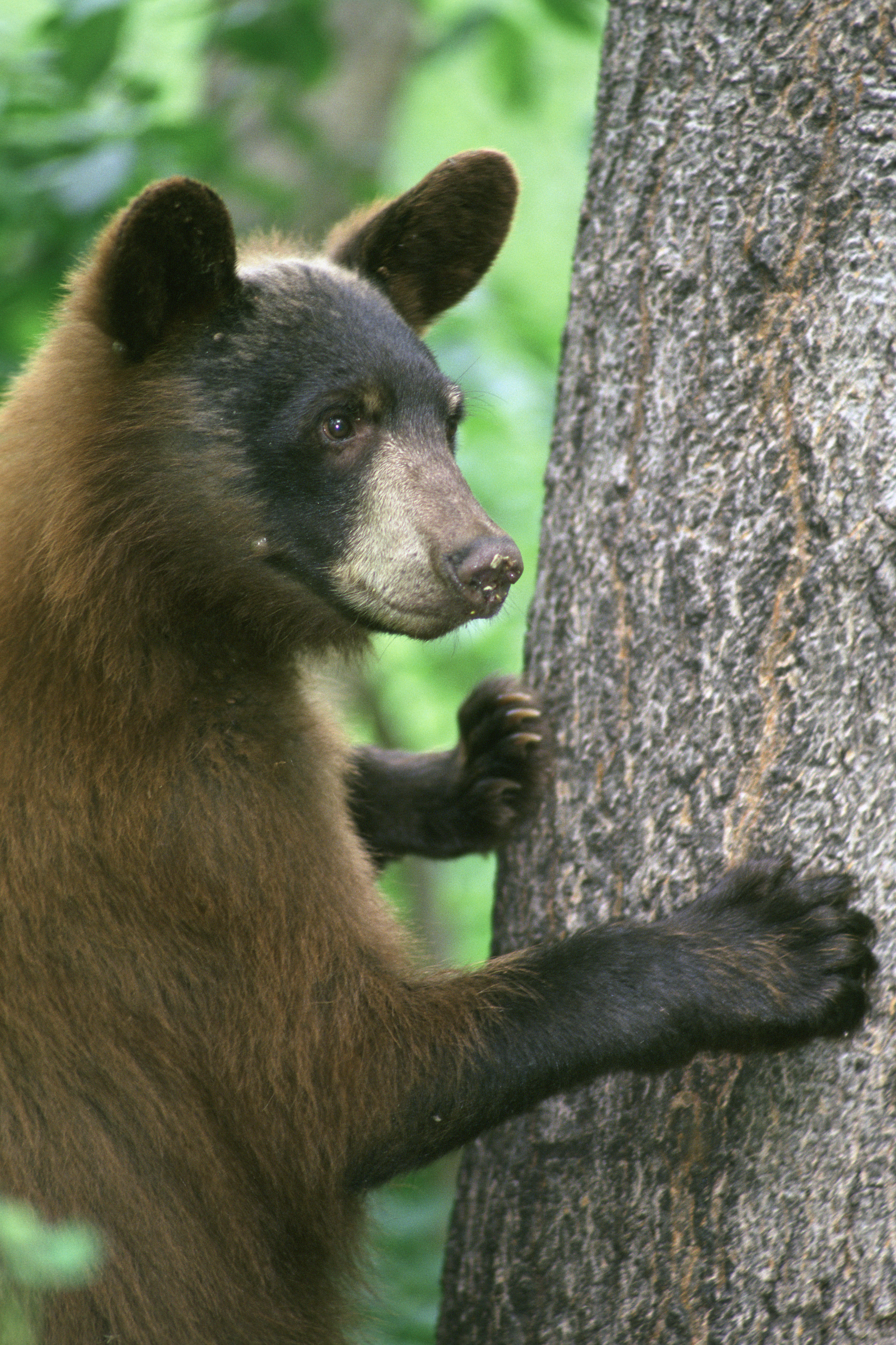
Photo Courtesy US FWS
Steve Maslowski, Photographer
Black bears have been known to attack humans, although usually very infrequently. Attacks most often happen when a black bear is defending cubs or food, or as a result of becoming accustomed to obtaining food from people.
Will the black bears be as hungry for summer as we are? It might be best to not take any chances while out exploring the mountains this summer. When not eating, be sure to carry all food, garbage, and scented items, such as toothpaste and chapstick, in an airtight plastic bag or securely store them in a vehicle or bear-proof container. I’d even recommend carrying bear spray just to be safe. And, don’t forget to hold on tight to those pic-a-nic baskets!
For Wild About Utah, I’m Mark Larese-Casanova.
Credits:
Images: Courtesy US FWS: https://Images.fws.gov
Text: Mark Larese-Casanova, Utah Master Naturalist Program at Utah State University Extension.
Additional Reading:
Burt, W. H. and R. P. Grossenheider. 1980. A field guide to the mammals. Houghton Mifflin Company, Boston. 289 pp.
Safety in Bear Country https://wildlife.utah.gov/dwr/learn-more/bear-safety.html
Utah Division of Wildlife Resources Utah Conservation Data Center https://dwrcdc.nr.utah.gov/rsgis2/Search/Display.asp?FlNm=ursuamer

